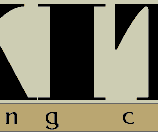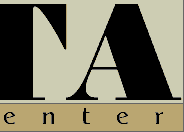 Save this page (97.1 kb)
Save this page (97.1 kb)
MY THOUGHTS ON THE AKITA DOG
pp. 167-172, 1975, Shin Journal-sha, Tokyo, Japan
By Naoto Kajiwara
Epilogue: The Akita Dog of The Future
As stated before, due to an unclear understanding of the Akita dog by many today, although this may seem arrogant on my part for attempting to predict the future, I wish to express my thoughts and hopes for the future in writing.
To do this, one must begin from the past to the present in order to evaluate the Akita dogs of today. Akita dogs, in general, have improved much in the essentials and body form and are not inferior when compared to other Japanese dogs. If asked whether the Akita dog has attained it's goal, I may not be able to give a completely positive reply. More corrections are necessary. What then has to be corrected? The development of the Akita dog with ideal image on the one hand, and the historical mission of preserving natural monuments on the other. When preserving a natural monument, any animal so designated could lose its significance if one departs too far from the original form of the past. This may be true for man, as well as in animals. We should comply with nature for proper growth and development. Departing from nature is said to be the first step toward extinction. I have also heard that the fall of any ancient civilization began rapidly after their departure from nature. Therefore, I believe it is very important to take another look at the Akita dogs of today from the standpoint of climate, habitat and ethnic backgrounds.
Should one become complacent when the facial features have improved, body structure is excellent, and essential qualities have improved remarkably? Should we now boast that the Akita dog is now unmistakably a large Japanese dog? Many questions could still go through one's mind. The Akita dog of today was revived after the Second World War. In spite of the many improvements in its essential qualities and structure, a significant amount of its original characteristics and temperament may have been lost.
Although these are not dogs, but I saw on TV a news report on the Kiso horse. Raised as a workhorse for many years in the Kiso area, the Kiso pony was considered the last of the purebred horses in appearance and form. One was able to strongly appreciate this animal ethnologically as a "Japanese horse." I wondered if that same consciousness could also be applied ethnologically to the
Akita dog. Some of today's Akita dogs, if applied to such horses, could be considered as race horses. The refined body forms remind one of the stylish thoroughbred horses. Although, it has not attained as much as the Kiso horse, it would be desirous if the Akita dog had more of the local appearance and form of dogs when compared to those from the Tohoku Odate Region. Thoroughbred horses bred for running may be equivalent to the Akita show dogs of today.
This trend is evident at the headquarters shows, where Akita dogs from all over Japan are shown. It seems that dogs with kan-i (full of spirit, boldness) rather than chinki (composure), karei (splendor) instead of the sobokusa (simple appearance), binkatsu (agility) rather than juko (composure and dignity) are preferred. The stylish slender dogs seem to be favored, because the Akita dogs of today have undergone such changes today. Essential qualities are rapidly last if the body forms began to depart from the ideal type. A dog that was considered slender during the growing phase often can mature into a beautiful animal. Even with significant improvements, some still fear that the burly Akita dog may decline early in quality. However, I believe that at one time, the Akita dogs possessed the simple regional appearance, whenever I look at old photographs of some of the Akita dogs. I believe, therein lies the theme of the Akita dog of the future.
With that in mind, Akita dogs of today have not yet reached the goal, but isinthe processofdoingso. A few yearsago, commentsonhow the Akitadog became smaller and thinner were heard. This topic was brought up by the Asahi Shimbun newspaper in October of 1972 with the headline, "City Size Out, Akiho Returning to Original Form." The article stated that the original Akita dog was heavier, larger and muscular with an impressive appearance. But recently (around 1965), owing to greater demands for the smaller stylish ("smart") type of Akita dog from the Tokyo and Osaka areas, the Akita dog began to gradually diminish in size. For a period, this smaller type of Akita dog was popular. However, their winnings began to wane at dog shows, as the cry from breeders and dog fans for the "return to the original form" gained momentum. Thus Akiho began to promote a movement to "return to the original." For those not concerned about essential qualities of the Akita dog, the occurrence of such a trend toward the smaller dog seemed a reality. To newsmen, who were laymen, their views of the Akita dog as outsiders are understandable. Some important officials in the headquarters also favored the smaller dog. Regrettably, the few from this official group did not stand up and refute such opinions and offer any explanations. They were probably unable to present the true goals, since the Akita dogs's bloodlines were supposed to be continuous and unchanged from ancient times. I do not believe that the Akita dog became smaller due to the wishes of dog fans in the cities. In the rural areas, dog fans were asking for better dogs, not because they preferred smaller or stylish dogs. However, since better dogs were found among the smaller dogs, the less informed probably believed that smaller dogs were preferred.
As mentioned in the chapter on breeding, gradual improvements in the Akita dogs were noticed after the war. But, even as late as the latter 1950s, not much uniformity in appearance and body type were seen. When compared to other Japanese dogs, many Akita dogs of that period still lacked the Japanese dog image. However, smaller Akita dogs with excellent body forms produced some excellent litters. The informed seasoned breeders quickly recognized this, but fearing that the smaller type may be perpetuated, did not continue their breeding program. However, for reasons unknown, from this time on, some smaller Akita dogs began to win in dog shows. Some of the seasoned breeders probably avoided to eliminate those faults in order to standardize the Akita dog. I believe that many in the Akita dog world took advantage of this situation and used smaller dogs to make sufficient improvements in the Akita dog. But it is a fact that the Akita dogs did became smaller for a time. During this period, the judges seemed to prefer quality over size.
Such a trend continued for a while. As the number of smaller dogs of higher quality increased gradually, quality began to be ignored, and criticisms were leveled at the smaller size. From the mid 1960s to 1972, this was mentioned in one of the major newspapers. Only experienced Akita dog breeders and handlers were well aware of the foregoing events.
My interest in animals center solely around the Akita dog. Many may disagree, but I believe that very few animals such as the Akita dog were affected by the trend of man's thinking. Coat colors have undergone changes repeatedly. Surprisingly, changes in the physical constitution were accomplished relatively easily. Also, certain faults in the Akita dog pointed out by judges were undershot jaws of years ago that were penalized at dog shows has been corrected. Such teeth problems are fewer today.
Another factor is the red coat. Red Akita dogs of today were rare ten years ago in the Akita area, regarded as the home base of the Akita dog. This was probably unexpected. Also, in a few years, color transformation to the beautiful white mask has occurred. Although body structure needs more improvement, many of the larger Akita dogs are within the standard. It is probably not very easy to produce a dog with all of the essential physical features, but, producing the type of Akita dog demanded by dog fans may soon become a reality.
How should the Akita dog of the future be? Many Akita dog fans may not be aware of this, but about forty years ago, Mr. Hyoemon Kyono , the sage from Southern Akita, beautifully described what the Akita dog of the future should be.
This appeared in a 1935 publication entitled, Showa Nihonken no Kento (A Study of Japanese Dogs of The Mid 1920s to The_Mid_1930s) , and I would like to quote a portion of his work in order to convey my thoughts.
"About ten years ago, they were available as medium dogs. However, the road to advancement today is not merely to produce a larger dog. First of all, one must produce features that are just as distinguishing. That is, a huge impressive muscular dog that is gentle and obedient. It should be a calm and good natured pet dog, a guard dog that will perform its necessary duties, and if angered will bark fiercely. Its conduct and appearance should be appropriate for a large Japanese dog as well. (Omissions) One should not solely produce a dog with a large body, but must also have an impressive muscular appearance and composure. Instead of emphasizing height only, since the difficult problem is in the perfecting of features, one should emphasize the importance of breeding toward improvement of the Akita dog."
This was written before World War Two, and may not be entirely applicable today, but this was during the period when the Akita dog was declared as a natural monument, and was barely coming out of a confused unorganized state. Although times may have changed, it seems that the goal toward completion (restoration) does not seem to have changed.
In referring to the Akita dog of the future, one should ask, are the qualities of the Akita dogs of today approaching that of the ideal Akita dog?
If true, some faults may still exist in the Akita dogs of today. As Mr. Kyono has stated, the huge size, impressive muscular appearance and gentle obedient disposition are necessary. However, as stated previously, I believe we should move toward the Akita dog with a form with the characteristics of the Japanese people. Furthermore, to the excellent features in the Akita dog of today, should not one add the terms goso (splendor), chinchaku (composure and dignity), juko (substance), soboku (artlessness)? By including these terms, one may be able say that such an Akita dog is one of the natural monuments as a large Japanese dog.
(The End)
Conclusions
I do not consider this book to be on a scholarly level. It is only my love for the Akita dog has led me to write this book. My Thoughts on The Akita Dog .
From the beginning, owing to lack of much data, this has not been an easy task. My research was inadequate, in spite of many attempts to find more information. I have tried to excluded any hearsays or allegations, and maintain some logic. I have been able to do this to some degree, due to the guidance and
cooperation of many dog lovers. Beginning with the great pioneers, and besides those already quoted in the book are, Mr. Sadakichi Tayama, Mr. Gisuke Yamamoto ( 1973 L. A. Akiho Show judge *). Dr. Shinichi Ishiguro ( 1975 L. A. Akiho Show judge *). Dr. Keiichi Ogasawara ( 1969 L. A. Nisei Week Akita Show judge and founder of the L. A. Akiho Branch *) and my dog friend, Mr. Gen Sano of Osaka.
To these gentlemen, who permitted their names to be used, my gratefulness goes out to them.
* Word's in Italics provided by translator .
| Translated by Tatsuo Kimura 11/03/1997 |
Top ↑ |




